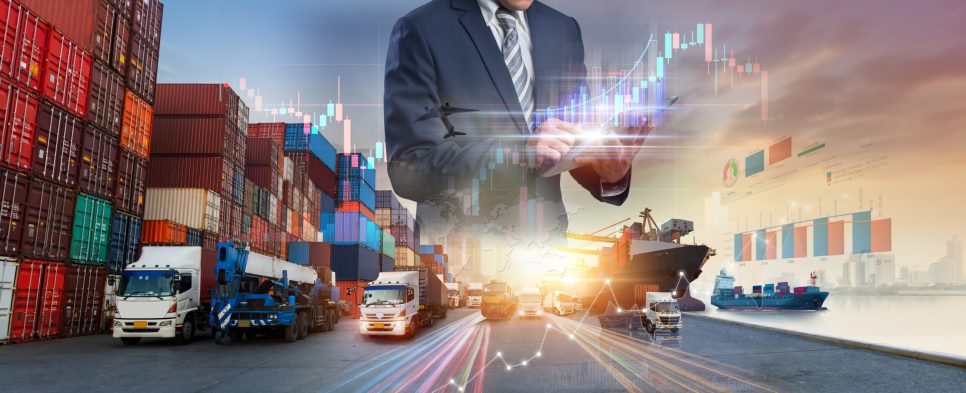Redefining the Customer in Logistics
In the past, logistics service providers (LSPs) have primarily focused on serving just the shipper as their direct customer. If you were working at an LSP that was serving a major retailer, your main concern was fulfilling that retailer’s needs.
Read also: 6 Ways to Enhance Your Logistics Efficiency and Improve Customer Relations
However, the industry is evolving, and forward-thinking LSPs are expanding their perspective to consider the end customers of their clients. This shift is crucial for staying resilient against market fluctuations and rate volatility.
The Changing Perspective
Traditional thinking for LSPs has always centered around the immediate customer – the shipper. This approach, while effective, is becoming outdated. Modern LSPs understand that to truly differentiate themselves, they must also focus on the shipper’s customer. It’s no longer enough to only think about your direct shipper customer’s needs. Instead, you should also consider the needs and satisfaction of the people buying from your shipper customer.
So how can you help your customer make their customer happier? This can look like investments in technology to position your business as a strategic partner for shippers, or investing in automation and data integration to support your customer’s customers.
As an LSP, you are also the custodian of key data that shippers can use to build digital products of their own to deliver value to other internal business units like purchasing, finance, or marketing. This data also creates value for the shipper’s end consumer in the form of loyalty programs, targeted marketing, and of course a better delivery experience.
Making a Strategic Shift
LSPs need to design their products and services in a way that enhances the overall customer experience for the end user. This means the value proposition should not only appeal to the shipper but also demonstrate how the LSP’s services make the shipper’s customers happier and more loyal.
This approach requires collaboration across various departments: product, transportation, and customer success teams. Each department brings a unique perspective and set of skills to the table.
The product team can develop and refine solutions tailored to the specific needs of the end customer, ensuring that offerings are not only innovative but also practical and user-friendly. For instance, if a shipper’s customers prefer weekend deliveries or specific time slots, the LSP can offer flexible delivery options to meet these preferences. This level of personalization enhances the end customer’s experience and increases their loyalty to the shipper.
The transportation team can optimize logistics operations to enhance delivery speed and reliability, directly impacting customer satisfaction. For example, by implementing real-time tracking systems and route optimization software, LSPs can ensure that deliveries are made on time, reducing the anxiety and uncertainty for the shipper’s end customers.
The customer success team plays a crucial role in understanding the customer journey and identifying pain points that need addressing. By proactively addressing these problems, LSPs can prevent minor issues from escalating into major complaints. For example, if customers frequently report issues with damaged goods, the LSP can work with the transportation team to improve packaging and handling processes.
By working together, these teams can gain a comprehensive view of how the business is currently serving shipper customers and pinpoint areas for improvement and opportunities to serve shipper’s end customers, too.
Leveraging Data for Better Insights
A critical component of this strategy is data. Accessing and analyzing data across systems will provide the insights needed for your product, transportation, and customer success teams to make informed decisions. By understanding the opportunities for improving service to the shipper’s customers, LSPs can uncover the true value of their offerings.
For instance, leveraging purchase order visibility can help LSPs manage dropshipping more efficiently, providing both the shipper and their end customers with transparency into shipment statuses. This visibility allows the end customer to track their order from the moment it leaves the warehouse until it arrives at their doorstep. By integrating advanced
tracking technologies and providing real-time updates, LSPs can significantly reduce uncertainty and improve the end customer’s experience.
A real world example: Jaguar Freight’s PO Management technology provides their shipper customers with upstream pre-transportation visibility, allowing them a better understanding of on-time shipment availability, as well as more time to address and mitigate delays when they occur. With this visibility, the shipper is then able to pass shipment updates and tracking information along to their end customer.
“The further upstream the supply-chain you have visibility, the more time and options you have to manage delays and deliver better service to the end customer.” – Simon Kaye, CEO and Founder at Jaguar Freight
Upgrading warehouse management systems (WMS) to offer real-time pick statuses can give shipper customers a better idea of product availability, enhancing the end customer’s shopping experience. This level of transparency ensures that end customers are informed immediately if a product is out of stock, preventing frustration and disappointment. Real-time inventory updates allow shippers to manage their stock more effectively, ensuring popular items are always available. This proactive approach can lead to fewer stockouts and backorders, resulting in a smoother shopping experience for the end customer.
To stay ahead, LSPs must redefine their concept of the customer to include the shipper’s customers, too. By focusing on the end-to-end customer experience, LSPs can build stronger, more resilient relationships with shippers and their customers, driving loyalty and growth.
Author Bio
As founder and CEO of Chain.io, Brian Glick has made a career of simplifying complex supply chain and trade compliance IT challenges. Brian brings a rare combination of executive perspective and deep technical knowledge to today’s supply chain challenges. From the early days of web-based visibility platforms and into today’s connected ecosystem, Brian has been an active leader in each phase of the connected supply chain evolution. As a former senior executive and two-time software company founder, Brian has brought his expertise to bear as an IT leader both within logistics service providers and through independent software companies.





Leave a Reply